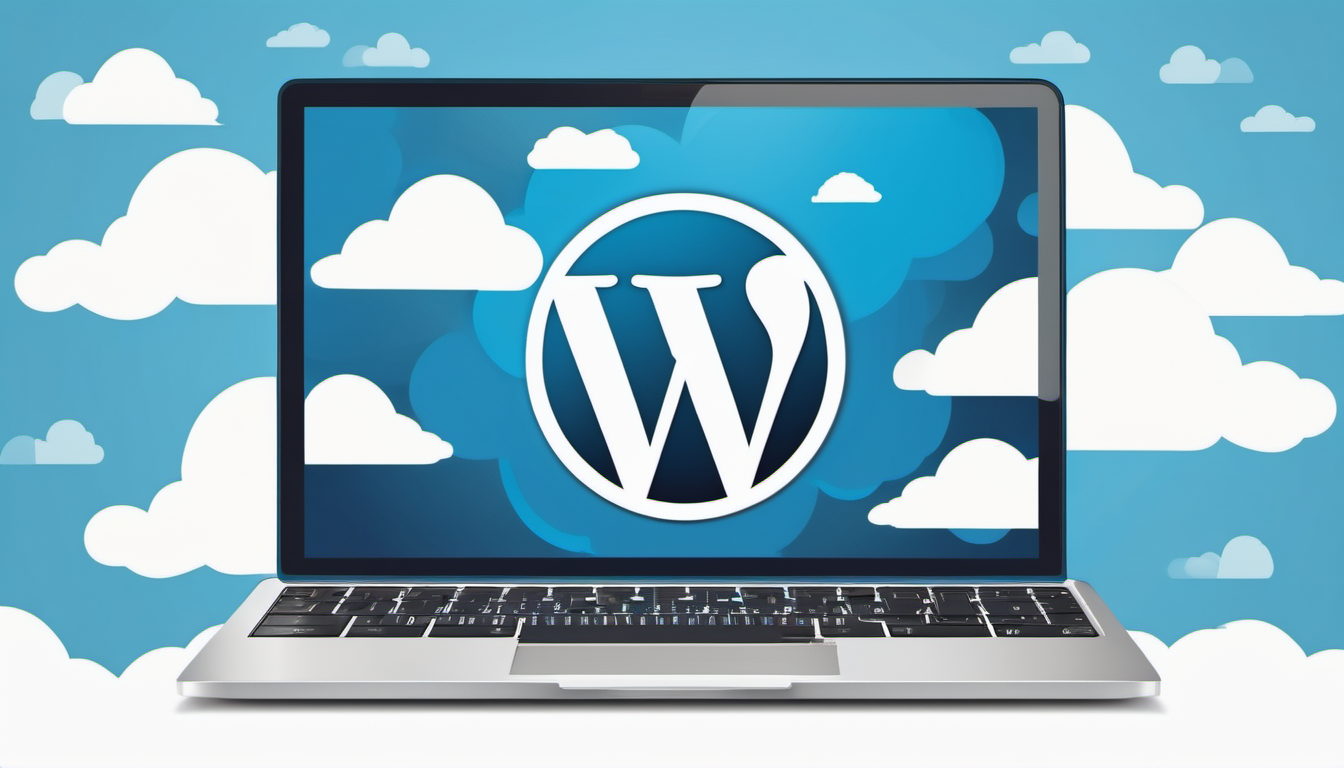歡迎來到使用託管 WordPress 服務高效管理多個客戶網站的世界!身為網路專業人士或代理商,您了解同時處理各種客戶及其網站所面臨的挑戰。跟上更新、安全性、效能優化和協作可能會讓人不知所措。這時託管的 WordPress 服務就可以發揮作用了!
在本文中,我們將探討什麼是託管 WordPress 服務以及為什麼它們有利於管理多個客戶網站。我們還將討論託管 WordPress 服務的主要特性和功能,以及它們與共享託管的差異。
此外,我們還將提供有用的提示,幫助您選擇合適的託管 WordPress 服務提供者並評估價格、服務等級協定、效能、安全性和支援。我們還將深入研究高效的網站管理實踐、協作和工作流程管理以及擴展和發展託管 WordPress 業務的策略。
此外,我們還將透過實施強大的安全措施、監控網站效能和正常運行時間以及處理 WordPress 更新和外掛程式管理來確保網站的安全性和可靠性。
閱讀本文後,您將深入了解託管 WordPress 服務如何簡化您的工作量、提高客戶滿意度並促進您的業務成長。那麼,讓我們深入探索使用託管 WordPress 服務進行高效網站管理的世界!
了解託管 WordPress 服務
歡迎來到了解託管 WordPress 服務的部分!如果您是 Web 開發人員或管理多個客戶網站,您可能會發現這些資訊特別有用。在本節中,我們將深入探討託管 WordPress 服務的定義和優勢,探索主要功能和功能,並了解它們與共享託管的差異。那麼,就讓我們開始吧!
託管 WordPress 服務的定義與優勢
託管 WordPress 服務是一種專為 WordPress 網站設計的託管服務。它們提供一系列功能和優勢,使管理 WordPress 網站更容易、更有效率。以下是使用託管 WordPress 服務的一些主要優勢:
- 自動更新:託管 WordPress 服務處理所有 WordPress 更新,包括核心軟體、主題和外掛程式。這可確保您的網站始終運行最新、最安全的版本。
- 增強安全性:託管的 WordPress 服務通常提供進階安全措施,例如防火牆、惡意軟體掃描和 DDoS 保護。這有助於保護您的網站免受網路威脅並確保客戶的資料安全。
- 效能最佳化:託管的 WordPress 服務通常包括內建快取、內容分發網路 (CDN) 和其他效能優化工具。這有助於提高網站速度和使用者體驗。
- 專家支持:透過託管的 WordPress 服務,您可以聯絡 WordPress 專家團隊,他們可以協助您解決任何技術問題或疑問。這使您可以專注於客戶的需求,而不是解決技術問題。
主要特性和功能
託管的 WordPress 服務提供一系列功能和功能,以簡化網站管理。以下是您可以期待的一些常見功能:
- 一鍵登台:暫存環境可讓您在將網站變更或更新部署到即時網站之前對其進行測試。託管的 WordPress 服務通常提供易於使用的暫存功能,可節省您的時間並降低破壞客戶網站的風險。
- 自動備份:定期備份對於網站保護和災難復原至關重要。託管的 WordPress 服務通常會提供自動備份解決方案,確保您的客戶的網站在出現任何問題時可以輕鬆恢復。
- 效能監控:託管的 WordPress 服務通常提供效能監控工具,可追蹤網站正常運行時間、頁面載入時間和其他指標。這使您可以快速識別並解決任何效能問題。
託管 WordPress 服務與共享託管有何不同
雖然共享主機和託管 WordPress 服務都為 WordPress 網站提供託管,但兩者之間存在著關鍵的差異。以下是託管 WordPress 服務脫穎而出的原因:
- WordPress 優化:託管 WordPress 服務專門針對 WordPress 網站進行了最佳化,而共享主機則適用於廣泛的平台。這種優化將為您的 WordPress 網站帶來更好的效能和安全性。
- 託管更新:使用共享主機,您有責任手動更新 WordPress、主題和外掛程式。另一方面,託管的 WordPress 服務會自動處理更新,確保您的網站始終保持最新且安全。
- 專業支援:託管 WordPress 服務為 WordPress 相關問題提供專門支持,而共享主機支援可能更為普遍。當您遇到任何網站問題時,隨時有 WordPress 專家可以幫您解決。
透過了解託管 WordPress 服務的定義、優勢、主要功能和差異,您可以為客戶的網站做出明智的決策,選擇最佳的託管解決方案。在下一部分中,我們將討論如何選擇正確的託管 WordPress 服務提供者。
選擇合適的託管 WordPress 服務供應商
當要有效管理多個客戶網站時,選擇正確的託管 WordPress 服務提供者至關重要。由於有如此多的選擇,在做出決定之前考慮各種因素非常重要。以下是幫助您找到完美提供者的一些關鍵考慮因素:
選擇提供者的注意事項:
- 可靠性: 尋找具有良好正常運作時間和可靠性記錄的提供者。確保他們有冗餘系統和備份計劃,以最大限度地降低停機風險。
- 可擴充性: 考慮您業務的成長潛力,並選擇能夠滿足您擴展需求的供應商。尋找提供靈活計劃以便於輕鬆擴展的提供者。
- 客製化: 評估您的特定要求並確定提供者是否提供您所需的客製化程度。尋找允許您自訂伺服器設定、安裝插件和存取進階功能的提供者。
- 專業知識: 研究提供者的經驗和專業知識。尋找其他客戶的評論和推薦來衡量他們的知識水平和客戶滿意度。
評估定價和服務水準協議:
- 成本: 比較不同供應商提供的定價計劃,並考慮您所支付的價格所獲得的價值。請記住,最便宜的選擇在性能和支援方面可能並不總是最好的。
- 服務等級協定 (SLA): 注意提供者提供的 SLA。這些協議概述了支援等級、正常運行時間保證和回應時間。確保 SLA 符合您的期望和要求。
- 支持: 考慮提供者提供的支援類型。尋找提供全天候客戶支援、多種溝通管道和回應支援團隊的供應商。
評估績效、安全性和支援:
- 表現: 性能對於客戶網站來說至關重要。尋找提供快速載入伺服器、內容分發網路 (CDN) 整合、快取機制和伺服器最佳化的供應商,以確保最佳網站效能。
- 安全: 管理客戶網站時,安全是首要任務。評估提供者實施的安全措施,例如 SSL 憑證、防火牆、惡意軟體掃描和定期備份。確保他們擁有強大的安全基礎設施。
- 支持: 管理多個客戶網站時,快速可靠的支援至關重要。評估可用的支援選項,例如即時聊天、電話支援和票務系統。尋找擁有專門支援團隊的供應商,可以及時解決您的問題。
透過考慮這些因素,您可以選擇一個滿足您的特定需求並為高效管理多個客戶網站提供堅實基礎的託管 WordPress 服務提供者。在做出決定時,請記住優先考慮可靠性、可擴展性、客製化、定價、SLA、效能、安全性和支援。
高效率的網站管理實踐
在管理多個客戶網站時,效率是關鍵。作為網站開發人員或代理商,您希望簡化流程並優化工作流程,以確保您能夠有效地管理和維護所有客戶的網站,而不會犧牲品質或時間。以下是一些有效的網站管理實踐,可以幫助您保持井然有序並為您的客戶提供卓越的服務:
簡化網站更新和維護
當您需要管理多個客戶時,追蹤網站更新和維護任務可能會很困難。為了簡化此過程並確保沒有遺漏,您可以:
- 建立時間表:制定定期更新和維護每個網站的時間表,同時考慮外掛程式、主題和核心 WordPress 更新等因素。
- 利用網站管理工具:考慮使用允許您集中管理多個網站更新的網站管理工具。這些工具通常提供一鍵更新、自動備份和網站健康監控等功能。
- 優先考慮關鍵更新:首先關注關鍵的安全性更新和補丁,以確保客戶網站的安全。
- 制定清單:建立一個包含網站更新和維護所有必要任務的清單。這將幫助您保持井然有序,並確保您不會錯過任何重要的事情。
自動化備份和安全流程
資料遺失和安全漏洞可能會對網站及其聲譽造成毀滅性的影響。自動化備份和安全流程可以幫助您減輕這些風險並節省時間。方法如下:
- 實施定期自動備份:為所有客戶網站設定自動備份,以確保其資料受到保護。選擇提供異地儲存的備份解決方案,這樣您就可以在安全的位置取得備份副本。
- 使用安全插件:在每個網站上安裝強大的安全插件,以幫助防範常見威脅,例如惡意軟體和暴力攻擊。配置插件以自動掃描漏洞並實施強有力的安全措施。
- 監控安全漏洞:實施一個系統來監控您管理的網站上的任何安全漏洞或可疑活動,並向您發出警報。這將使您能夠在必要時立即採取行動。
實施性能優化技術
網站速度和效能對於使用者體驗和搜尋引擎優化(SEO)至關重要。實施效能優化技術不僅會使您的客戶受益,而且還能提高您管理其網站的效率。考慮以下策略:
- 優化圖像:壓縮並調整圖像大小以減小檔案大小而不影響品質。這將有助於改善網站的載入時間。
- 啟用快取:使用快取外掛程式或伺服器級快取來儲存網頁的靜態版本。這可以顯著減少頁面載入所需的時間。
- 縮小 CSS 和 JavaScript:透過刪除不必要的字元和空格來縮小 CSS 和 JavaScript 檔案可以幫助減少檔案大小並提高網站效能。
- 選擇可靠的託管服務提供者:確保您的客戶的網站託管在具有最佳效能和正常運行時間保證的可靠伺服器上。好的託管服務提供者可以幫助提高網站速度和使用者體驗。
實施這些網站管理實踐不僅可以幫助您有效地管理多個客戶網站,還可以確保您提供高標準的服務並取得成果。透過簡化流程、自動執行任務和優化效能,您可以節省時間和精力,同時保持客戶網站的品質和安全性。
協作和工作流程管理
在管理多個客戶網站時,有效的協作和工作流程管理對於確保順利運作和及時完成任務至關重要。透過實施正確的策略和利用適當的工具,您可以簡化與客戶的溝通,有效地管理專案和任務,並創建無縫的工作流程。以下是一些需要考慮的關鍵做法:
與客戶有效溝通
清晰、一致的溝通對於成功的合作至關重要。以下是一些提示:
- 建立溝通管道: 確定與客戶的首選溝通方式,例如電子郵件、電話或專案管理平台。
- 設定期望: 明確定義溝通流程,包括回應時間和可用性,以避免任何誤解或延誤。
- 定期更新: 定期向您的客戶更新其網站的進度,及時解決任何疑慮或問題。
- 積極傾聽: 透過積極傾聽和提出澄清問題,確保您了解客戶的需求和目標。
“溝通對那些努力工作的人來說是有效的。” – 約翰鮑威爾
專案和任務管理工具
使用專案管理工具可以大幅增強協作和組織。以下是一些值得考慮的熱門工具:
- Trello: 一種視覺化協作工具,可讓您建立板、清單和卡片來追蹤任務並將其指派給團隊成員。
- 體位: 專案管理平台使您能夠建立專案、任務和子任務、設定截止日期、分配合作者並追蹤進度。
- 大本營: 一個全面的專案管理工具,包括待辦事項清單、文件共享、團隊訊息和集中專案溝通等功能。
這些工具提供透明度、責任感和結構,幫助您和您的客戶掌握任務和截止日期。
版本控制和暫存環境
版本控制和登台環境對於管理網站開發和更新至關重要。它們允許您在將它們部署到即時網站之前進行更改並測試它們。它們之所以重要的原因如下:
- 版本控制: 幫助您追蹤網站文件所做的更改,與多個開發人員合作,並在需要時回滾到先前的版本。 Git 和 GitHub 是流行的版本控制系統。
- 暫存環境: 在正式發布之前,提供一個單獨的環境來測試和預覽變更。這有助於防止錯誤並確保無縫的用戶體驗。
“合作的關鍵是信任和責任。” – 唐‧蒙塔古
協作和工作流程管理對於有效管理多個客戶網站至關重要。透過實施有效的溝通策略、利用專案管理工具以及利用版本控制和登台環境,您可以簡化流程並確保與客戶的成功合作。
現在我們已經探索了協作和工作流程管理,讓我們繼續下一部分: 擴展並發展您的託管 WordPress 業務.
擴展並發展您的託管 WordPress 業務
因此,您已經開始了自己的託管 WordPress 服務業務,並且一切進展順利。您有幾個客戶,但現在您想將業務提升到一個新的水平。您希望擴大並增加您的客戶群、擴展您的服務並與您的客戶建立長期關係。以下有一些策略可以幫助您實現這些目標:
應對日益增加的工作量的策略
- 僱用額外的團隊成員:隨著客戶群的成長,獨自管理所有網站變得越來越困難。僱用額外的團隊成員可以幫助分配工作量並允許您接待更多的客戶。
- 實施高效率的專案管理系統:利用專案管理工具簡化您的工作流程並確保及時完成任務。這將幫助您保持井然有序並更有效地處理更大的工作量。
- 委派任務:學習將任務委派給您的團隊成員。透過將特定的職責分配給不同的團隊成員,您可以確保所有任務都有效率、有效地完成。
擴大服務和追加銷售機會
- 提供額外服務:隨著客戶需求的成長,請考慮提供額外服務,例如網站設計、內容創建、搜尋引擎優化或社群媒體管理。這不僅為您的客戶增加了價值,還為您的業務開闢了新的收入來源。
- 向現有客戶追加銷售:花時間了解客戶的目標和目的。確定您的服務可以提供額外價值的領域,並向您的客戶推銷這些服務。這可以透過定期溝通並根據他們的特定需求提供客製化解決方案來實現。
建立長期客戶關係
- 提供優質的客戶服務:建立長期的客戶關係始於提供卓越的客戶服務。及時回覆客戶詢問,解決他們可能遇到的任何問題或疑慮,並盡力超越他們的期望。
- 定期與客戶溝通:讓您的客戶了解他們的專案進度、行業的任何更新或變化,以及您提供的任何新服務或功能。定期溝通有助於建立信任並讓您的客戶保持對您的業務的關注。
- 傾聽客戶回饋:積極尋求客戶的回饋並利用它來改善您的服務。將客戶回饋納入您的業務流程,以確保您滿足他們的需求和期望。
請記住,擴展和發展託管的 WordPress 業務需要時間和精力。透過實施這些策略並專注於為您的客戶提供優質服務,您可以將您的業務推向新的高度並建立一個成功且蓬勃發展的企業。
確保網站安全性和可靠性
網站安全性和可靠性是管理多個客戶網站的關鍵方面。作為託管的 WordPress 服務提供者,您有責任確保客戶的網站免受潛在威脅,並確保其順利運作而不會出現任何停機。以下是一些幫助您維護客戶網站的安全性和可靠性的關鍵做法和策略:
實施強而有力的安全措施
- 對所有 WordPress 帳戶(包括管理員帳戶和具有管理權限的客戶帳戶)使用強而獨特的密碼。
- 定期更新 WordPress 核心、主題和插件,以確保安裝最新的安全性修補程式。
- 安裝可靠的安全插件,提供惡意軟體掃描、暴力破解保護和防火牆保護等功能。
- 啟用雙重身分驗證以提供額外的安全性。
- 限制登入嘗試次數以防止暴力攻擊。
- 監控使用者活動並接收任何可疑行為的警報。
監控網站效能和正常運作時間
- 使用網站監控工具來追蹤客戶網站的正常運作時間和效能。
- 設定警報,以便在網站發生故障或任何效能問題時立即收到通知。
- 透過優化圖像、最小化 CSS 和 JavaScript 檔案以及利用快取機制來優化網站載入速度。
- 定期使用 Google PageSpeed Insights 或 GTmetrix 等工具測試網站速度,以確定需要改進的地方。
- 確保您的伺服器配置正確並提供足夠的資源來處理網站的流量。
處理 WordPress 更新和外掛程式管理
- 定期更新 WordPress 核心、主題和插件,以確保網站運行最新的功能、改進和安全性修補程式。
- 在更新之前,請建立網站備份以減輕任何潛在問題。
- 將更新套用到即時網站之前,先在暫存環境中測試更新。
- 刪除任何過時或不必要的外掛程式以降低漏洞風險。
- 執行定期的外掛程式審核,以確保所有安裝的外掛程式都是最新的、安全的並且與最新版本的 WordPress 相容。
透過實施這些安全措施並建立監控程序,您可以最大限度地降低網站漏洞的風險,保護客戶的數據,並確保其網站擁有可靠、安全的環境。
「網站安全不僅在於保護客戶的資訊;這是為了維護他們的線上形象和聲譽。
結論
結論
有效地管理多個客戶網站可能是一項具有挑戰性的任務,但只要使用正確的工具和策略,它就會變得容易得多。透過利用託管 WordPress 服務的強大功能,您可以簡化工作流程、提高網站效能並確保每個網站的安全性和可靠性。
透過 Managed-WP(高級託管 WordPress 雲端託管平台),您可以將網站管理提升到新的水平。他們的專家團隊提供全天候支持,解決您可能遇到的任何問題或疑慮。借助其簡化的基礎設施,您可以專注於為客戶提供卓越的數位體驗。
從定義託管 WordPress 服務的優勢到了解主要功能和功能,Managed-WP 確保您的網站處於安全狀態。透過選擇正確的託管 WordPress 服務提供者、評估定價和服務等級協議以及評估效能、安全性和支持,您可以做出符合您的業務目標的明智決策。
實施高效的網站管理實踐,例如簡化更新和維護、自動化備份和安全流程以及優化效能,可讓您保持領先地位。協作和工作流程管理也至關重要,透過有效的溝通、專案和任務管理工具以及版本控制和登台環境,您可以簡化與客戶的工作。
隨著您管理的 WordPress 業務的成長,您需要製定策略來處理不斷增加的工作量、擴展服務和追加銷售機會以及建立長期客戶關係。當您擁有正確的工具和技術組合時,擴展您的業務會變得更加容易。
確保網站的安全性和可靠性對於您的客戶和您的商業聲譽至關重要。透過實施強大的安全措施、監控網站效能和正常運行時間以及掌握 WordPress 更新和外掛程式管理,您可以建立信任並提供卓越的服務。
總之,有效管理多個客戶網站需要結合正確的工具、策略和專業知識。透過與 Managed-WP 合作,您可以簡化基礎設施、提供自由的數位體驗並提供專家的解決問題支援。不要讓網站管理的複雜性阻礙您——擁抱託管 WordPress 服務的強大功能,將您的業務推向新的高度。
託管WP – 您在有效率地管理 WordPress 服務方面的合作夥伴。
常見問題解答
- 使用託管的 WordPress 服務管理多個客戶網站有哪些好處?
使用託管的 WordPress 服務,您可以透過提供集中式儀表板存取、自動更新、監控、備份、增強的安全性、可擴展性和專業支援來有效地管理多個客戶網站。
- 我可以將現有的客戶網站移轉到託管的 WordPress 服務嗎?
是的,大多數託管 WordPress 服務提供者都提供網站遷移服務。他們可以幫助您順利地將現有客戶網站遷移到他們的平台,沒有任何麻煩。
- 託管的 WordPress 服務如何幫助節省時間和資源?
託管的 WordPress 服務可處理軟體更新、備份、安全性和效能優化等日常任務,從而釋放您的時間和資源。這使您可以專注於為客戶提供價值並發展業務。
- 管理多個客戶網站的託管 WordPress 服務費用是多少?
託管 WordPress 服務的成本取決於網站數量、流量、儲存和所需的附加功能等因素。服務提供者通常提供分級定價計劃以滿足不同的需求和預算。
- 我可以客製化託管的 WordPress 服務來匹配客戶網站的品牌嗎?
是的,許多託管的 WordPress 服務提供者提供白標解決方案,讓您可以自訂儀表板、電子郵件和品牌以符合您機構的身份。這可確保您的客戶獲得一致的品牌體驗。
{“@context”:“https://schema.org”,“@type”:“FAQPage”,“mainEntity”:[
{“@type”:“Question”,“name”:“使用託管 WordPress 服務管理多個客戶網站有什麼好處?”,“acceptedAnswer”:{“@type”:“Answer”,“text”:“使用託管 WordPress 服務可讓您通過提供集中式儀表板訪問、自動更新、可擴展、可增強的安全性監控、可增強的安全性監控”。
{“@type”:“Question”,“name”:“我可以將現有的客戶網站遷移到託管的 WordPress 服務嗎?”,“acceptedAnswer”:{“@type”:“Answer”,“text”:“是的,大多數託管的 WordPress 服務提供者都提供網站遷移服務。他們可以幫助您順利地將現有客戶網站遷移到他們的平台,沒有任何麻煩。
{“@type”:“Question”,“name”:“託管的 WordPress 服務如何幫助節省時間和資源?”,“acceptedAnswer”:{“@type”:“Answer”,“text”:“託管的 WordPress 服務可處理軟體更新、備份、安全性和性能優化等日常任務,從而釋放您的時間和資源。這使您可以專注於為客戶提供價值並發展您的業務。
{“@type”:“Question”,“name”:“管理多個客戶網站的託管 WordPress 服務的費用是多少?”,“acceptedAnswer”:{“@type”:“Answer”,“text”:“託管 WordPress 服務的費用取決於網站數量、流量、存儲和所需的附加功能等因素。服務提供者通常會提供分級定價計劃以滿足不同的需求和預算。
{“@type”:“問題”,“name”:“我可以自訂託管的 WordPress 服務以匹配我的客戶網站品牌嗎?”,“acceptedAnswer”:{“@type”:“Answer”,“text”:“是的,許多託管的 WordPress 服務提供者都提供白標解決方案,允許您自訂儀表板、電子郵件和品牌以匹配。這可確保您的客戶獲得一致的品牌體驗。
]}



















